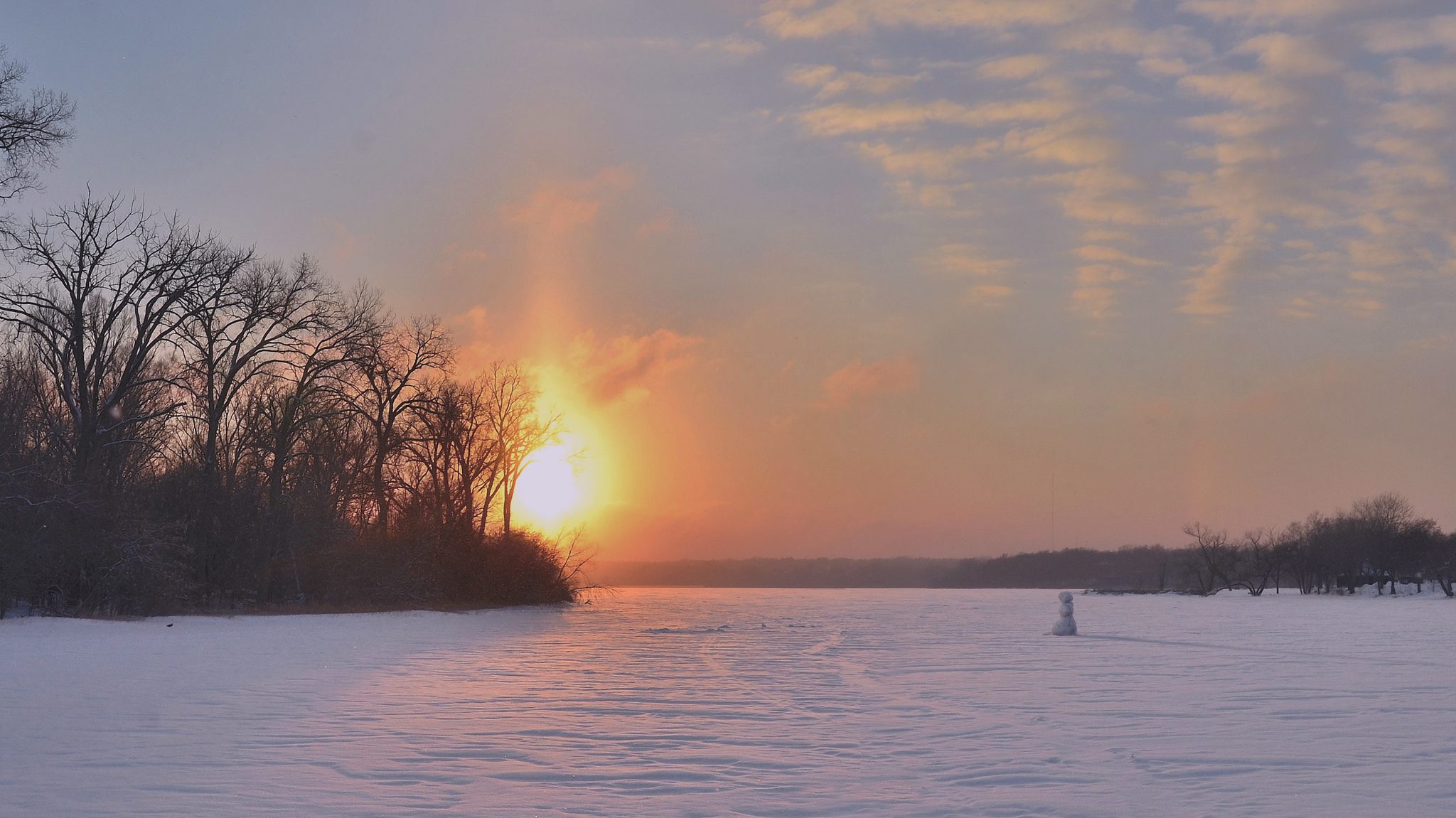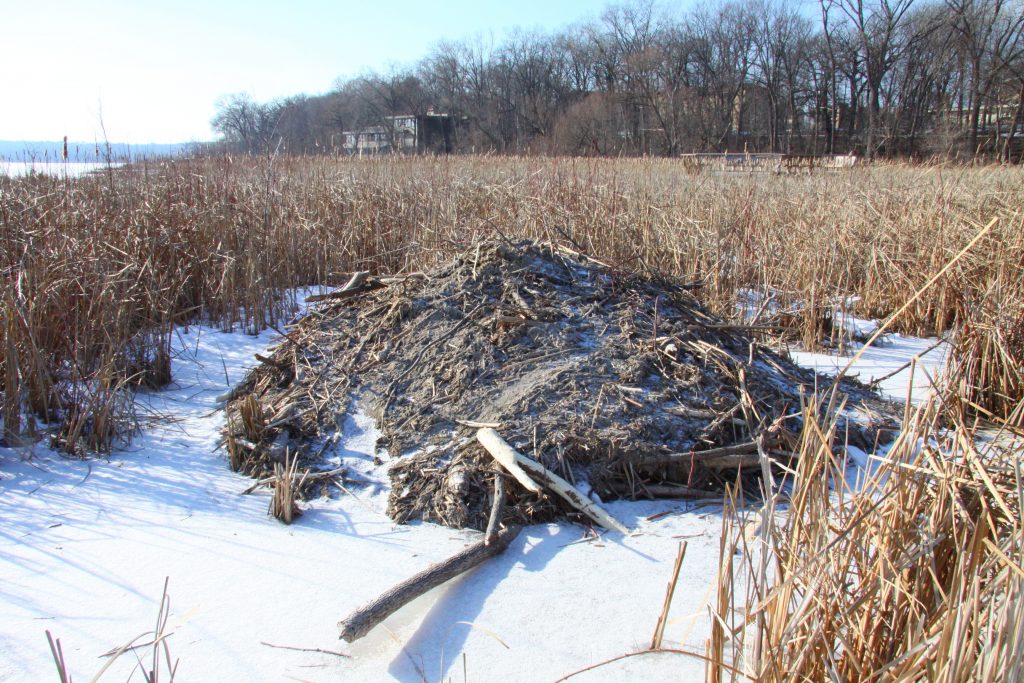
Deep winter is a special time when the world is magically transformed to white stillness. The laws of nature seem suspended-you can walk on water! But many don’t take advantage because they don’t know how to stay safe or warm.
For safety, the main thing is not to go out too early in the winter. By January, it’s usually fine. Just use common sense, watch where you are walking, and take your cell phone. There are several spots where springs cause open water all winter–the biggest at the SW corner of the lake. Just don’t approach them too closely. Springs don’t freeze because spring water is about 55 F and the motion of flowing water disturbs the layering needed to freeze. You can take a ski pole to probe for wet spots or steady yourself. You can strap Yaktrax to your feet to prevent slipping. If there’s any snow, it’s unlikely to be slippery. But late in the winter, if it’s above freezing and the ice is wet, it can be very slippery.
Whenever it snows more than an inch or so, the weight of snow presses the ice down, causing water to well up. This makes the snow slushy and it looks dangerous, although it’s really quite safe. The only problem with slush is your feet can get wet and cold. The solution–wait a few days until the slush freezes.
For comfort, avoid going out if the wind is over 5 mph.
A hood is much warmer than a hat. Wear several layers of wool socks and shoes with a good tread. If your hands are cold, it’s probably because you are loosing heat elsewhere, probably from lack of a hat or hood, scarf, or from a gap around your wrists.
I love looking for animal tracks, especially after a light dusting of snow. You can see tracks of geese, crows, smaller winter birds, mice, coyotes, and muskrats; sometimes beaver or mink. Dog tracks are always near human tracks, looping out and back to the human. Coyote tracks look similar, but they don’t follow people–instead going in a beeline across or around the lake. Coyotes use winter lakes and streams as highways.

Photo by David Thompson
It’s fun to puzzle out what the animals were doing. You can see where the geese skidded when landing. Just beyond where they take off, you may find the impression of wing tips. Once I followed some tracks around the wooded edge of the lake. A large animal had been running, then sliding for about 4-6 feet at a stretch. The feet were webbed–indicating a beaver or otter. But eventually I found the impression of a large, flat tail! So, it was a beaver. Another time, I found where a coyote had slept among the cattails.
The ice itself seems alive. You can hear loud cracks like a gunshot–as the ice expands or contracts with temperature changes. It’s loud because sound is conducted faster and further through solid ice, compared to through air. Despite these scary sounds, the ice is perfectly safe. When the ice shrinks in cold weather, a thin strip of new ice may form along the shore. When it gets warmer, the ice expands it pushes up against the shore, making ridges of ice or even of earth.
Later in the winter you can see changes in the ice. Small ice crystals grow to become much larger crystals linked together like the pieces of a puzzle. There are many layers of bubbles. Ones closer to the surface formed earlier when the ice was thinner. The gas that caused the bubbles is methane (a greenhouse gas) produced by bacteria growing without oxygen in the mud. Intricate, star-like patterns form in early spring when surface meltwater tries to find a way back to the lake. If there’s a heavy snowfall blown by the wind, it may form long ridges of hard snow parallel to the wind called “sastrugi.” The upwind tips of each ridge get undermined by wind erosion, till they droop to touch the surface.
Don’t miss our winter wonderland. Your kids and dog will love it too.
